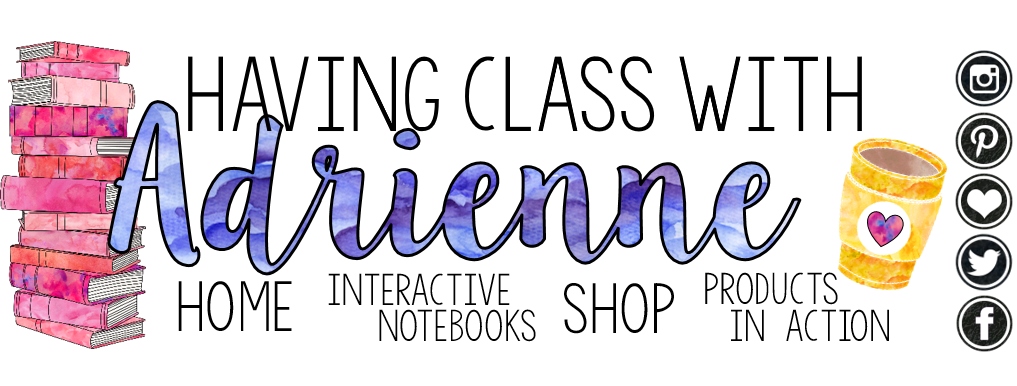My little one on the way has also got me lesson planning for back to school and maternity leave. Since I am gearing up, I wanted to share the 7 products of mine that I created and still use every year to help get myself together and smoothly sail into the new year.
Data Notebooks are a must for back to school. I have worked in a Baldrige Schools (in which data notebooks are a requirement) since I began teaching and now I can't imagine not having one. We spend a lot of time the first week getting these notebooks set up, they make for perfect lessons to set expectations and build community. We start by creating and recording a mission and vision for our class, then we discuss and map out what quality students and quality teachers look like, and we have a section to set and check in on goals. We set up data graphs to track test scores, so throughout the year we are always revisiting to enter and reflect on progress,
My class rules posters are another piece that is essential for the first week. My class always has a big discussion about the rules we think we need in our classroom. I generally "guide" the discussion to the 3-5 rules that really sum up my expectations. While the students are discussing, I am jotting their ideas on the whiteboard, we are voting to see which rules are the most important, and we are revising to find ways to combine two or more similar rules. What's left when we're done is a messy board that reflects the input of every student. Sometime over the next couple days, I make the final rules fancy in my editable posters document and reintrouduce them to the class by having them turn and talk about why we decided each rule was important. It is a great refresher!
These schedule cards are something that I am just recently very excited about. Typically, I just print and post our typical daily schedule somewhere in the room and if things change then we just go with the flow. Towards the end of last year, during the crazy testing season when our schedule changed daily, I started writing the daily schedule on the board everyday with more detail. The students really loved it. They would pause to read it every day and then keep me on track with what was coming up. This year I decided to make event strips that I can laminate and just re-order in a pocket chart everyday to reflect our schedule.
This meet the teacher day kit has been a life-saver the past couple years. Our Open House day is always the last day of the work week, on a Friday, and then we come back Monday and start school. This is not ideal since the work week is full with meetings, not leaving me any time to set up. I a;so never had time after open house to organize the supplies the kids dropped off before school started on the following work day. This always created such a hectic, frantic time. Now, I can just update my about me/scavenger hunt booklet, print out the signs for supplies, and be ready to go!
For some reason, creating a sub binder was never something I thought was a big to-do at the beginning of the year. I would always drag my feet on putting one together because I knew I wasn't going to miss any crucial days at the start of the school year. Then, I had my daughter. I realized that your own children don't really care that it's the first month of school if they are sick themselves. That's when I started getting myself in gear and creating one right off the bat, just in case. The past school year, it really saved me a couple times when my daughter got sick over night and I could just tell my team to grab the sub binder with pre-made copies off my shelf vs. me having to drag myself into school at 7am to plan. (I also created a binder for maternity leave and blogged about it here.)
Every year I revamp my homework binder/folder a little bit, but the basics stay the same. I love being able to just make some edits vs. having to start from scratch. I also created some parent forms that are tailor-made to fit my classroom. It is so nice to have both in one place for when I am copying like a mad women during work week.
This last product is one that plays a big part in my lesson plans during the first week. One component of this pack is the data wall pieces. Posting and maintaining a data wall is a requirement for me, but I always try to make it as meaningful as possible for my students. I start with a blank wall and only add pieces after discussion or a lesson. The other piece in this pack is the essentials I need for my first week lesson plans, like get to know you writing prompts, behavior anchor charts, fake vs. real reading sort, how to treat a book lesson pieces, writing portfolio cover, etc.
There you have it! Those are all of the things I need to start my year off smoothly. It took me forever to find out what fits me best and crate these items, but now that I have them, it is easy breezy to do quick updates at the beginning of each year. All of these products are available in my TPT store and the majority of them are editable so that you can customize them to fit your classroom.
I bundled all 7 of these products together for the ultimate back to school package!
Please feel free to leave me comments with your ideas and must-haves for back to school.

















































